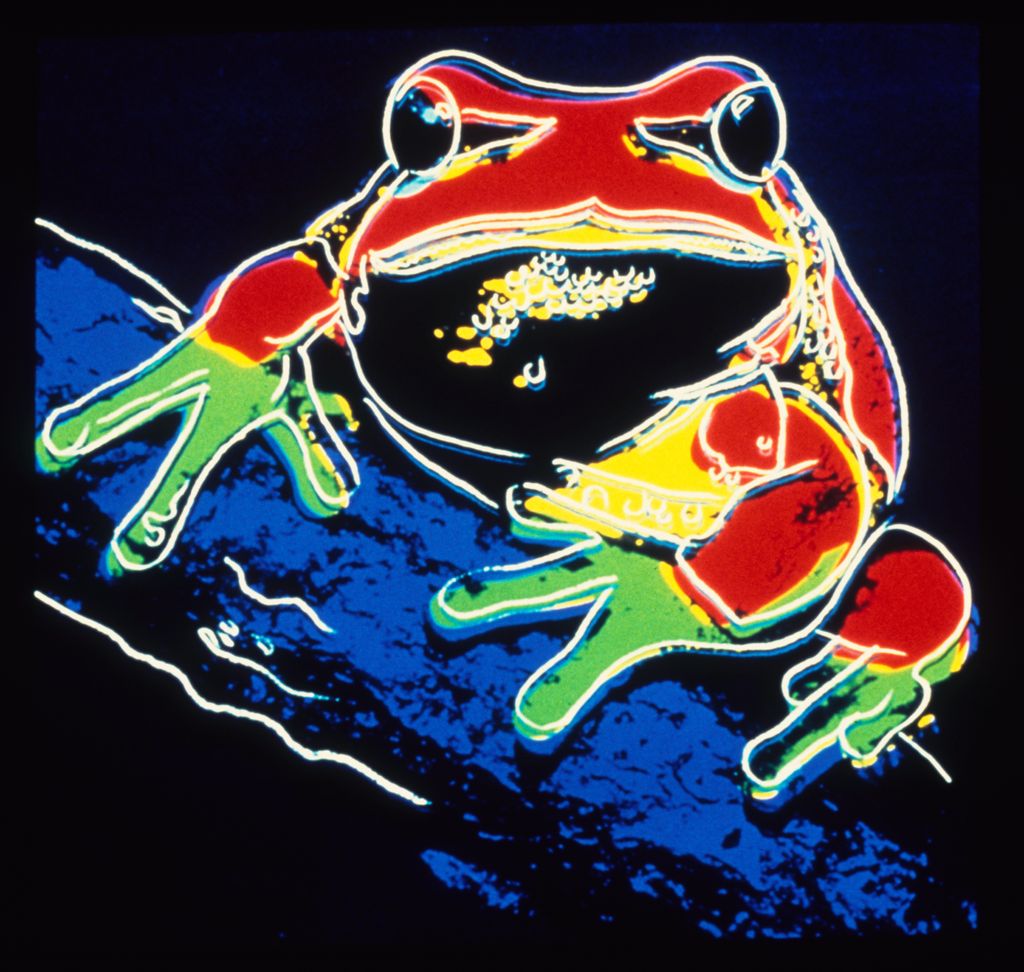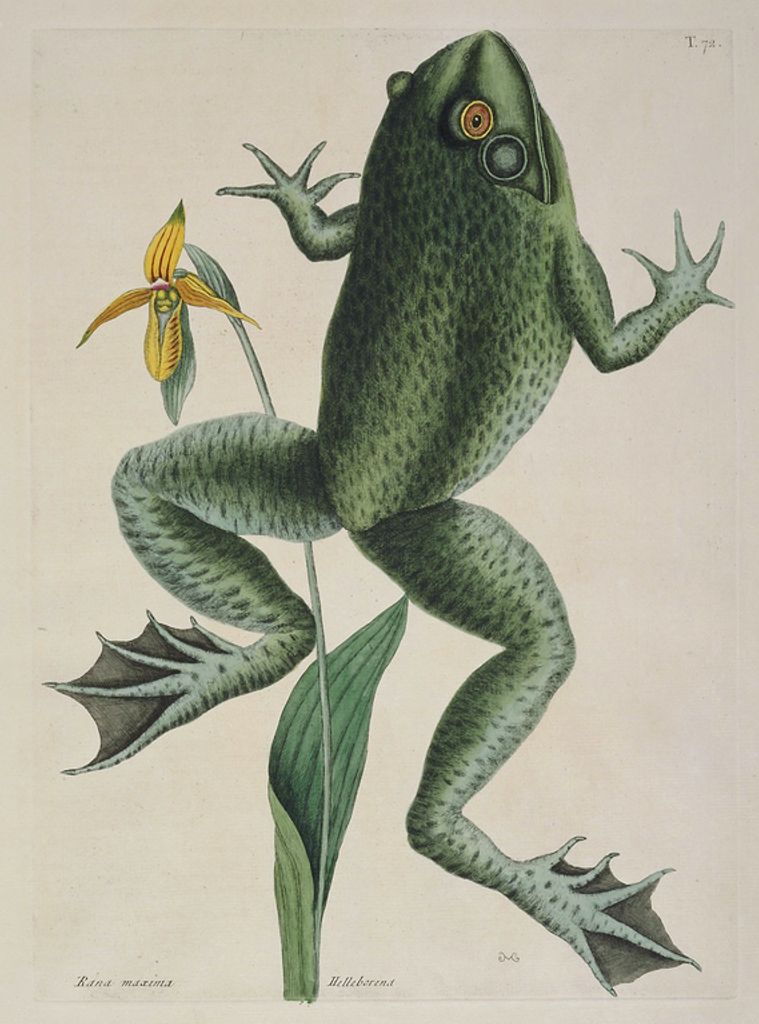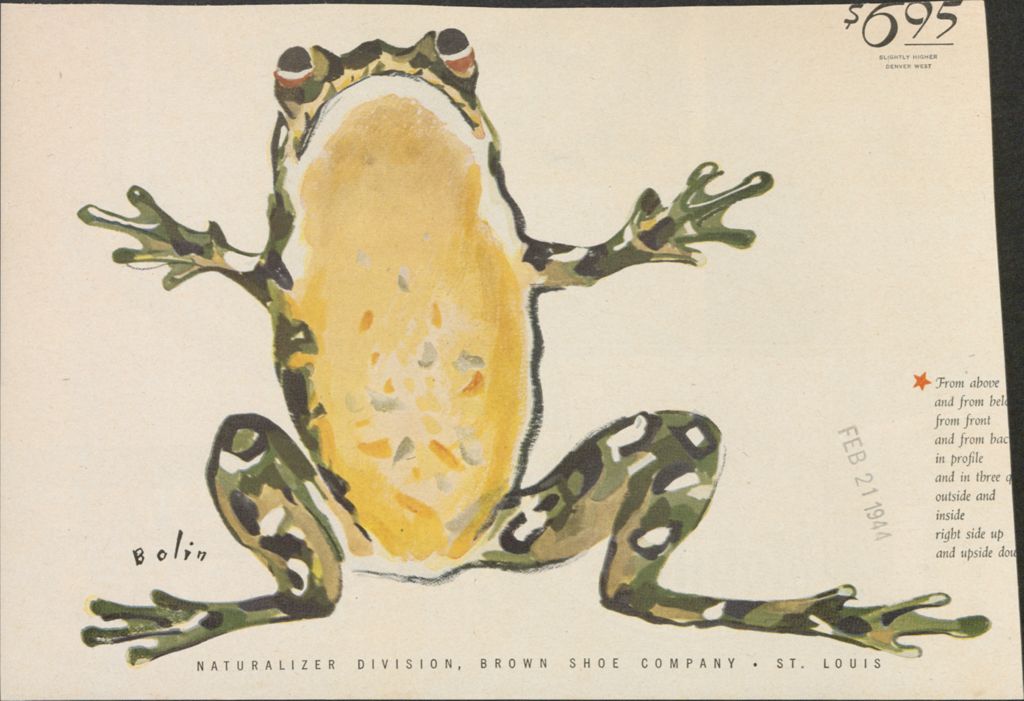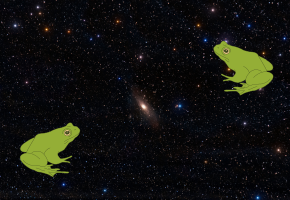In this blog post, we contemplate the relationship (if any) between calendars and frogs. Read to the end to find two unique programs for students with deadlines on February 29, 2024.

A Ribbit in the Time
You might have noticed, there’s an extra day on the calendar this year!
Every four years, with some exceptions, the (Gregorian) calendar adds an extra day in order to realign with the astronomical year. This is because it takes about 365.242190 days (or, roughly, 365 days, 5 hours, 48 minutes and 45 seconds) for the Earth to complete its orbit around the sun. So while most years are rounded down to 365 days on the calendar, those leftover hours add up and become a conventional calendaring quirk observed as “Leap Day.”
But why the big bother about a few hours and minutes? According to Bob Craddock writing in Smithsonian (2020), “If we didn’t account for this extra time, the seasons would begin to drift. This would be annoying if not devastating, because over a period of about 700 years, our summers, which we’ve come to expect in June in the northern hemisphere, would begin to occur in December!”
The story of Leap Day is rooted in ancient history, starting in the Julian calendar in 46 BC with Julius Caesar and evolving with the creation of the Gregorian calendar by Pope Gregory XIII in 1582 (Carter, 2024). This history is also connected with astronomy and planetary movement. While Julius Caesar attempted to sync up conventional time-keeping with astronomical realities by adding up a quarter of a day to create an additional calendar date every 4 years, there remained 11.2 minutes that were unaccounted for in the Julian calendar. By the early 1500’s, this oversimplified method of tracking the days again became problematic by creating a “13 day drift” between the calendar and the Earth’s actual revolution around the Sun. As a result, the Gregorian calendar was proposed, which accounts for the fact that .24219 is less than .25 by skipping “three leap days every four centuries” (Carter, 2024). The 13 day drift is what prompted the shift from the Julian to the Gregorian calendar.
This froggy little rule can be described as follows:
“By adding a leap day every four years, we actually make the calendar longer by over 44 minutes. Over time, these extra 44+ minutes would also cause the seasons to drift in our calendar. For this reason, not every four years is a leap year. The rule is that if the year is divisible by 100 and not divisible by 400, leap year is skipped. The year 2000 was a leap year, for example, but the years 1700, 1800, and 1900 were not. The next time a leap year will be skipped is the year 2100.”
(“The Science of Leap Year”, Bob Craddock, 2020)

An Amphibian’s Guide to Time Travel
The history of Leap Day is part of the real-life impact of the complexities of astronomy, mathematics, and time itself; especially time as a social construction, such as it is with calendars.
So what does this have to do with frogs?
Not much, really. Frogs, being the amphibious creatures they are, probably care very little about the minutia of human society and its calendars. Like the Earth’s 365.242190 days of travel around the Sun, frogs are part of a physical world that is marked by the seasons and the rhythmic cycles of the nature.
But frogs do LEAP! So, why not make a connection between our hoppy friends and our human system of time-keeping, where we jump and skip over time as needed?
Frogs are mostly widely known for their metamorphic lifecycle, starting as tadpoles with tiny tails and growing into leaping amphibians with four legs. In most species of frogs (of which there are over 7,000 globally), their hind-legs are especially strong, allowing them to leap great distances — in some cases, over 20 times their body length.
Frogs, like the Earth and Time, are also very, very old — fossil records indicate that they have existed for hundreds of millions years. A book from CSUN Library’s collection such as The rise of amphibians: 365 million years of evolution would be a good place to start for more information on this topic. Another title in our catalog looks at frogs and other natural phenomena: It’s raining frogs and fishes: four seasons of natural phenomena and oddities of the sky. Maybe it isn’t such a logical leap to consider frogs in relationship to Leap Day, after all?

Leap into a new opportunity!
Why not take this “extra” day as a chance to hop into a new opportunity?
LAPL’s Diversity and Inclusion Apprenticeship
Los Angeles Public Library (LAPL) offers a 10-week paid program known as the Diversity and Inclusion Apprenticeship (DAIA) for students over the age of 18 who are committed to public service. If you’ve ever wondered what working at a public library is like, this could be your chance!
For more information, check out the apprenticeship information on the LAPL website.
KCRW’s Young Creators Project
If you’re the musical sort and are under 21, you can submit a song to be played by the LA-based radio station, KCRW 89.9FM. For more information, check out the Young Creators Project information online.
What other opportunities might you find this February 29th? Maybe some serendipity, or a”ribbit-ing” adventure? An extra night of rest and relaxation? Or maybe you’re a “leapling” celebrating your birthday? No matter the event or occasion, the CSUN University Library wishes you a hoppy Leap Day!

References
Artwork retrieved from Artstor, accessible through CSUN University Library.
Carroll, R. L. (Robert L. (2009). The rise of amphibians : 365 million years of evolution. Johns Hopkins University Press.
Carter, Jamie. (2024). “Leap Day 2024: Why We Have Leap Years Every 4 Years—But Not Always.” Forbes, https://www.forbes.com/sites/jamiecartereurope/2024/02/20/leap-day-2024-why-we-have-leap-years-every-4-years-but-not-always/. Accessed 21 Feb. 2024.
Craddock, Bob. (2020). “The Science of Leap Year.” Smithsonian. https://airandspace.si.edu/stories/editorial/science-leap-year. Accessed 21 Feb. 2024.
ChatGPT. https://chat.openai.com. Accessed 21 Feb. 2024. https://chat.openai.com/share/81143089-6817-453d-a4a2-a6115b1f2645



